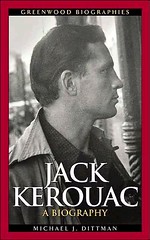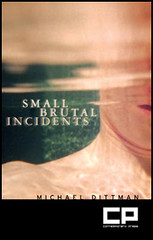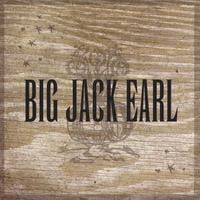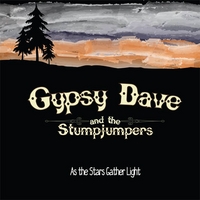The Allegheny College Art Galleries’ “The Art of Persuasion,” an exhibition exploring attempts to sway public opinion through visual culture closes next week on March 16. The exhibition, part of Allegheny’s Year of Social Change, features the college’s permanent collection of World War I and World War II posters, serigraphs from Puerto Rico’s Division of Community Education, photographs from the Farm Security Administration, and contemporary work by illustrator and political cartoonist Ward Sutton.
Gallery goers are greeted as the enter the show with one of the most iconic propaganda posters, Fred Strothman’s “Beat Back the Hun” from 1918. Publicity campaigns for the Treasury Department's Liberty Loan bonds produced some of the war's most compelling - and gruesome - posters. The Liberty Bond posters were inflammatory, but highly effective. Many posters promoted German hatred, such as this one, showing a blood-thirsty Hun looking over war-torn Europe and across the Atlantic Ocean to America. The bayonet drips blood and the “Hun's” face is grey, dead, inhuman.
There’s a large cognitive jump from the Liberty Bond posters to the Serigraphs from Puerto Rico’s Division of Community Education. The origins of the Division of Community Education (DIVEDCO) are closely tied to Puerto Rico’s complicated relationship with the United States. DIVEDCO had strong connections to President Franklin Roosevelt’s New Deal. Its early organizers — Edwin Rosskam, Jack Delano and Irene Delano — all had experience in the Farm Security Administration. While sharing the form of New Deal projects, however, the work and substance of DIVEDCO reflected the particularities of Puerto Rico and broader trends within Latin American art and politics.
Huracan (1958) by Jose Manuel Figueroa appeals to the woodcut WPA style. It’s a poster promoting a PSA style film about hurricane awareness. More importantly, its design shows the progression of the persuasive poster form as it begins drawing on the popular aesthetics of movie posters. A personal favorite was 5 cuentos de miedo by Lorenzo Homar (1955) promoting a booklet about the benefits of using science rather than superstition – here woodcut style figures are paired with a vibrant red background. 
By 1965, that style had been replaced by posters that use more of David Klein’s TWA travel posters – bright flat colors and blocky figures and architecture. It’s a more abstract vision of progress much different from the classical figures that start the show.

One of the themes of the show is the power of the graphic images, not only in the posters themselves, but also in the media they advertise. Carlos Osorio’s Juan sin Seso – advertises a film depicting the story of a rural man’s confusion and loss of critical thinking abilities caused by modern advertising. Here in the poster, an advertising collage shows through the light robin egg blue of the poster’s background suggesting an ever present hum of consumerism existing just beneath the surface of consciousness, diverting and distorting. And yet there’s a meta argument here as well, as the posters and photos and comic included in the exhibit are using the same technique but for the “right” reasons.
The exhibit also includes FSA photos ranging from the abstract photos of Jack Delores model airplanes decorating Chicago’s Union Station ceiling
 to more iconic ones like Walker Evans’ portrait of Bud Fields’ family in Hale County Alabama and washstand with oil lamp both featured in Let Us Now Praise Famous Men:
to more iconic ones like Walker Evans’ portrait of Bud Fields’ family in Hale County Alabama and washstand with oil lamp both featured in Let Us Now Praise Famous Men:
 The FSA selection also includes four Dorthea Lange images including selections that highlight Lange’s skill at using cropping to bring out ironic realities of American Life such as “Next Time, Try the Train, Relax”
The FSA selection also includes four Dorthea Lange images including selections that highlight Lange’s skill at using cropping to bring out ironic realities of American Life such as “Next Time, Try the Train, Relax”

Finally, ending the exhibit are World War II propaganda posters include the still shocking, “This Happens Every Three Minutes Stay on the Job and Get it Over ” depicting a dead GI where he fell, Thompson submachine gun just out of the reach of his hands, clothes splattered with blood, face hidden by the angle of his fall, but his rough hands and torn fingernails still visible; his ammunition and pack flung about him.  How unlike our own wartime reality with the dissonant dichotomy of embedded reports and soldiers connected home though the internet umbilical cord, and the still recent controversy over the depiction of flag draped coffins.
How unlike our own wartime reality with the dissonant dichotomy of embedded reports and soldiers connected home though the internet umbilical cord, and the still recent controversy over the depiction of flag draped coffins.
Like Juan we are carefully cocooned fom the death directed towards us and sponsored by us. Over 50 years , it seems we are no more savvy, but have an easier time creating our own reality. Sutton’s cartoons at the beginning of the show would be better realized at the end of show – suggesting how we far we have come. today, we use our time to debate the persuasiveness of campaign designs and the aesthetics of campaign posters. We are too polite, too sensitive to allow the brute persuasiveness of the early 20th century posters into our sphere. How would we react to a contemporary posters declaiming “Beat Back the Hajji with Liberty Bonds”? How uncomfortable have we become with animalistic, tribal nature inside of us and how we itch when it’s prickly nature punctures our created life and values?
The Art of Persuasion,” an exhibition exploring attempts to sway public opinion through visual culture until March 16. Gallery hours are Tuesday through Friday, 12:30-5 p.m.; Saturday, 1:30-5 p.m.; and Sunday, 2-4 p.m.
The Art Galleries are wheelchair accessible and located in Doane Hall of Art, east of North Main Street between College and John Streets.
For more information, call (814) 332-4365 or visit www.allegheny.edu/artgalleries.
![]()
![]()















No comments:
Post a Comment